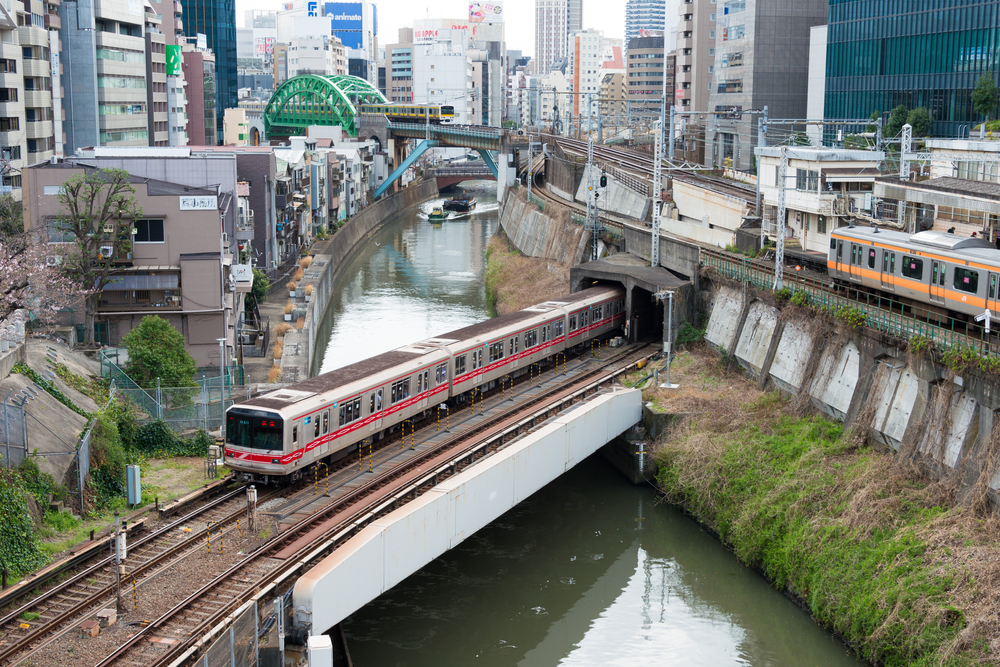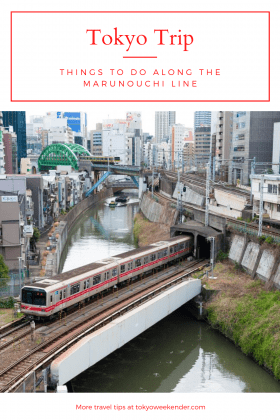It runs from Ogikubo in the west of Tokyo before looping through the beating heart of the city. It then hooks its way back to the north and ends in Ikebukuro. Of course, we’re talking about the Tokyo metro’s Marunouchi Line. It’s a route that delivers passengers to some of the most interesting and iconic places in Japan’s capital. Along the way you can experience a variety of sights, food and scenery that could only be found in Tokyo.
Koenji
Beginning the journey on the Marunouchi Line at Ogikubo, head two stops to the neighborhood of Koenji. This area was once little more than a dormitory suburb known only for its proximity to Shinjuku. It’s now become one of the coolest neighborhoods in the city, rivaling even the hipster strongholds of Shimokitazawa and Harajuku.
The neighborhood is now the epitome of Tokyo chic. There are vintage clothing stores and an impressive selection of restaurants and bars. From fans of craft beer to those wanting to watch live music, there’s something for everyone. Another bonus is the BnA Art Hotel, where you can stay in a living art gallery.
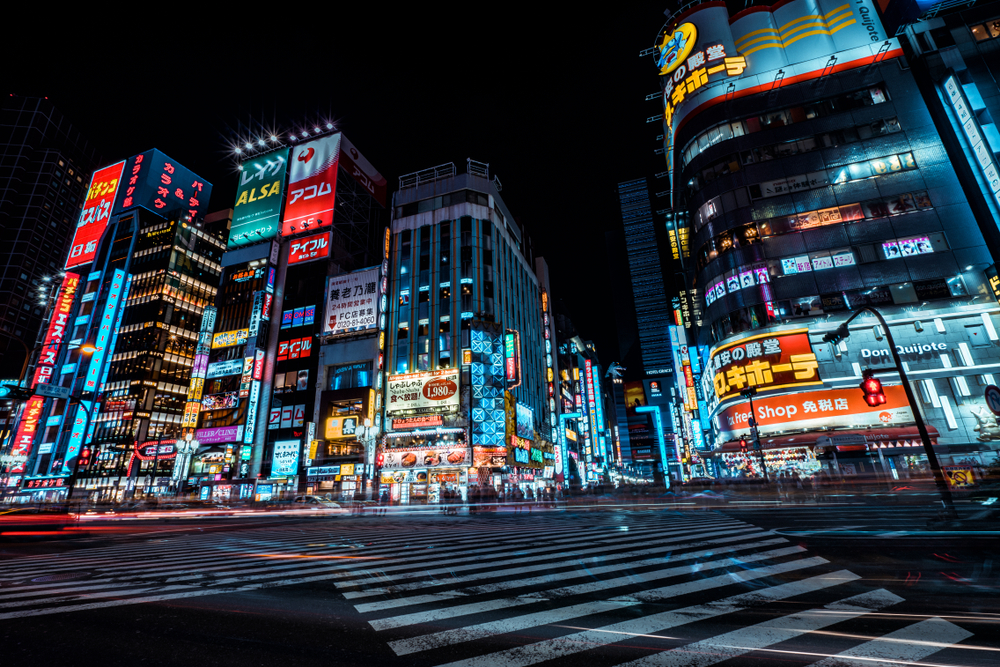
Photo by Nicholas Courtney / Shutterstock.com
Shinjuku
Moving forward, the Marunouchi Line arrives at the world’s busiest train station. While the station itself should be traversed and escaped as quickly as possible (for the sake of one’s own sanity!), Shinjuku at night offers perhaps the quintessential Blade Runner-esque view of the neon signs for which the city is so famous. It is also an excellent place to explore with its labyrinthine side streets of alleyways and bars.
Shinjuku Gyoenmae
After the chaos of Shinjuku station, the next point on the Marunouchi journey is two stops down the line. Whereas Shinjuku represents the busy and hectic pace of Tokyo life, Shinjuku Gyoen (Shinjuku National Garden) is, paradoxically, a symbol of Japan’s tranquility. The garden’s entrance can be found right next to the metro station. It is a true gem among the skyscrapers that tower over it.
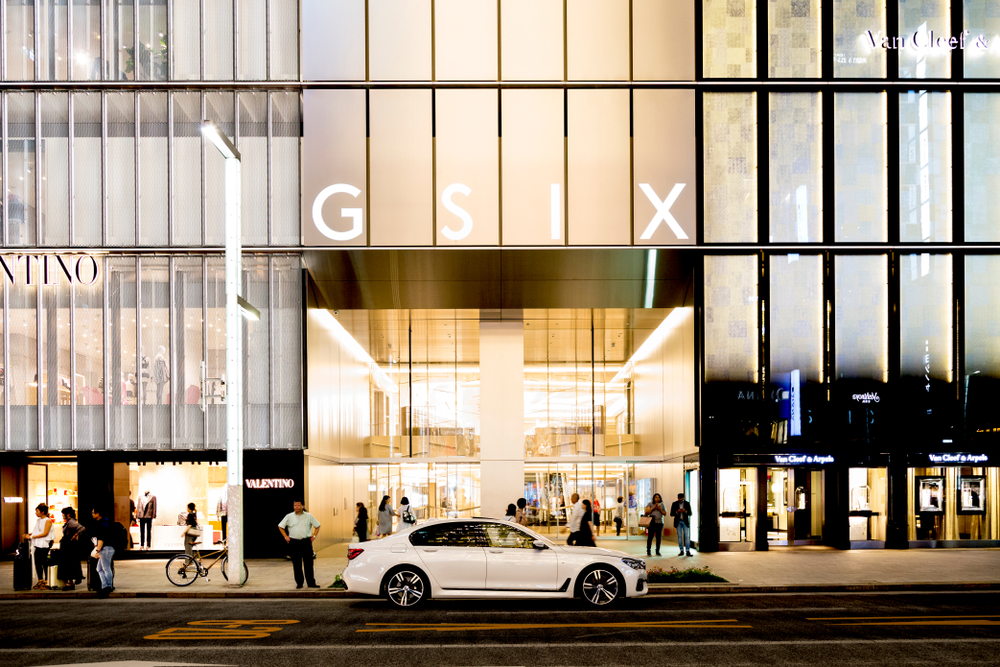
Photo by Osugi / Shutterstock.com
Ginza
Further down the tracks, the Marunouchi line brings travelers to the shopping and dining hub that is Ginza. There are stores and restaurants to suit all tastes, needs and styles in this area of the city. However, unlike some of the newer shopping and leisure areas of Tokyo, Ginza still has strong links to the past. As such, it’s a place where you can feel the city’s history. There’s an opportunity to visit traditional tea rooms such as Higashiya and enjoy famous kabuki performances at the Kabukiza Theatre. Even shopping in Ginza mixes the old and the new. You have ultra-modern boutique stores that stand side by side with the famous early-20th century department stores (such as Mitsukoshi).
Ochanomizu
Ochanomizu’s an area that wouldn’t necessarily be on the radar of many visitors or Tokyo residents. Nevertheless, it is worth a brief detour. Home to Meiji University, there are many students in the area. As a result, you will find some fantastic cheap restaurants and the secondhand book shops are definitely worth popping in. The neighborhood is also home to the Nikolai Cathedral, a cathedral built in a Russian Orthodox style that was partially destroyed during the Great Kanto Earthquake and rebuilt soon after. It provides an interesting piece of classical architecture surrounded on all sides by the skyscrapers of modern Tokyo.
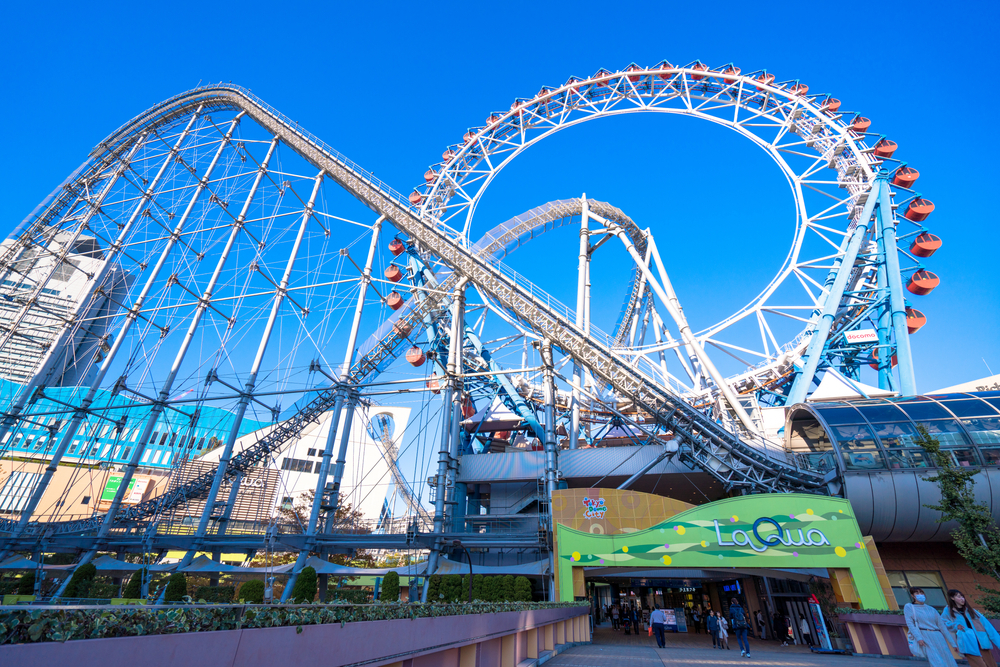
Photo by YAO23 / Shutterstock.com
Korakuen
The Marunouchi Line weaves its way steadily on towards its final stop but just before the end of the line it arrives at Korakuen. A baseball Mecca (depending on which team you support), Korakuen is home to the Tokyo Dome, the iconic stadium arena that plays host to a number of concerts, events and perhaps even more importantly, the Yomiuri Giants baseball team. However, if baseball is not your thing, Tokyo Dome also hosts Spa LaQua (with its huge variety of onsen) and a shopping mall.
Another place of note in this area is Fire House where you can try some of the amazing burgers on offer. It takes around 10-15 minutes on foot to get there from Korakuen Station but expect to wait as the restaurant is popular.
Ikebukuro
Finally, the Marunouchi Line comes to the last stop on its journey. One of central Tokyo’s major hubs and yet so often bypassed in favor of its noisier neighbors in Shinjuku and Shibuya, Ikebukuro has recently undergone a number of huge new developments. What makes the area so interesting is that Ikebukuro combines the old and new of Tokyo. Modern shopping malls stand alongside small hobby shops that have not changed for years. Michelin star gourmet bistro restaurants can be seen next to small yakitori bars where skewers of meat are cooked over charcoal fires. In many ways, with its juxtaposition of old and new, Ikebukuro is a symbol of what makes a journey through Tokyo so unique – a journey best traveled along the route of the Marunouchi Line.
Feature photo by beibaoke / Shutterstock.com
Updated On June 10, 2021

